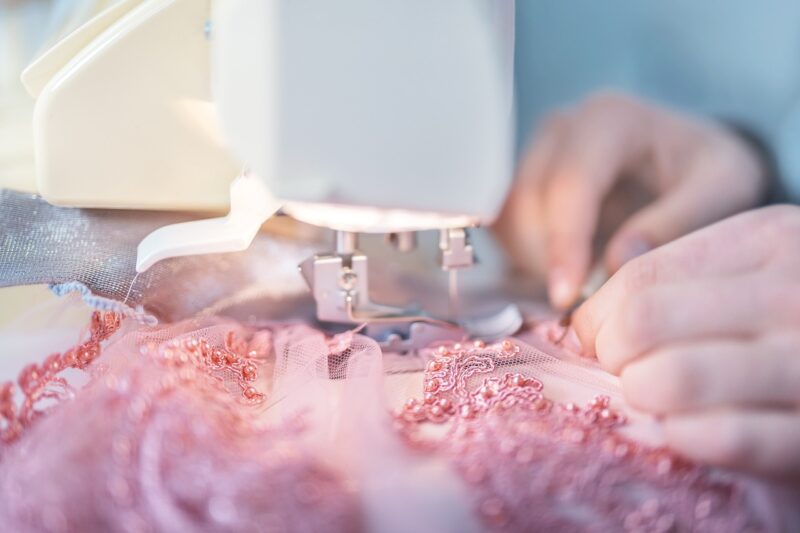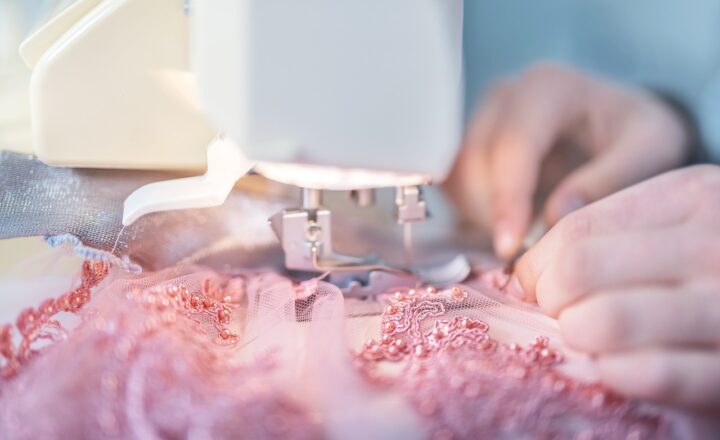How to Sew Your Own Clothes: A Beginner’s Guide to Custom Fashion
November 16, 2024

Sewing your own clothes opens up a world of creativity, self-expression, and personalized fashion. In a society where fast fashion saturates our markets, making your own garments allows you to contribute to sustainability while also embracing your unique style. If you’re a beginner, this comprehensive guide will walk you through everything you need to know to get started on your sewing journey.
1. The Basics: Understanding Sewing Tools and Materials
Before you start sewing, it’s essential to familiarize yourself with the necessary tools and materials. Here’s what you need:
- Sewing Machine: Investing in a reliable sewing machine is crucial. While a basic model may suffice for beginners, consider a machine with various stitch options for future projects.
- Fabric: Start with woven fabrics like cotton for ease of handling. Once you build confidence, you can experiment with knit fabrics and other textures.
- Thread: Select high-quality thread that matches your fabric. It’s important to choose the right weight and type for the best results.
- Scissors: Get a pair of fabric scissors for accurate cutting. Avoid using them on paper to maintain their sharpness.
- Measuring Tools: A measuring tape, ruler, and tailor’s chalk or fabric markers are essential for accurate measurements and markings.
- Pins and Clips: Use pins or fabric clips to hold pieces together as you sew. They prevent shifting and ensure precision.
- Patterns: Beginners may find it easier to start with commercial sewing patterns that provide step-by-step instructions for making garments.
Having these tools on hand will set you up for a successful sewing experience.
2. Choosing the Right Pattern for Beginners
Selecting the appropriate pattern is crucial for beginners. You want something that matches your skill level and also feels fulfilling. Here are some beginner-friendly options:
- Simple Tops: Start with a basic t-shirt or tank top pattern. These typically involve straight seams and less shaping, making them perfect for novices.
- Skirts: A simple elastic waist skirt can be a great starter project. It requires minimal fitting and is highly customizable.
- Pajama Pants: Create comfortable, loose-fitting pajama pants with basic seams. This project allows for practice without stressing over precision.
- Simple Dresses: Look for patterns described as “easy” or “beginner.” A shift dress pattern is usually forgiving and straightforward to sew.
Remember to read through the pattern instructions before starting, as they will guide you each step of the way.
3. Preparing Your Fabric and Pattern
Once you have your pattern and fabric, it’s time to prepare everything:
- Washing Fabric: To prevent shrinkage later, wash and dry your fabric before cutting. This process ensures your finished garment keeps its size after laundering.
- Ironing Fabric: Iron out any wrinkles to ensure accurate cutting. Smooth fabric lays better when you pin or cut it.
- Cutting the Pattern: Carefully cut out the pattern pieces according to the provided instructions. Be sure to transfer any markings to your fabric, as they will guide you during sewing.
Preparation plays a crucial role and dramatically affects the quality of your finished garment.
4. Basic Sewing Techniques You Need to Know
Familiarize yourself with these fundamental techniques before you start sewing:
- Sewing Straight Seams: Practice guiding your fabric through the sewing machine while maintaining a consistent seam allowance.
- Backstitching: Always backstitch at the beginning and end of your seams to secure them and prevent unraveling.
- Sewing Curved Seams: When sewing around curves, gently steer the fabric by adjusting your hands to maintain an even seam line.
- Hem Finishing Techniques: Get comfortable with different types of hems, such as blind hems and rolled hems, to create a polished edge on your garment.
- Gathering Fabric: Learn to gather fabric for ruffles or to fit a waistline by sewing two parallel lines of long stitches and pulling them gently to create volume.
Practice makes perfect! Take time to experiment with these techniques on scrap fabric before moving on to your actual garment.
5. Sewing Your First Garment
Now that you’ve prepared all elements, it’s time to start sewing:
- Follow the Instructions: Make sure to read through the entire pattern instructions before starting. Follow them step by step for the best results.
- Pinning Pieces Together: As you work, continually pin pieces together to prevent slipping. This will ensure that seams stay aligned as you sew.
- Sewing with Confidence: Don’t rush! Take your time as you sew, ensuring each seam is even and secure. Remember, you can always rip out stitches if necessary!
- Finishing Touches: After sewing your garment, finish all raw edges with techniques like zigzag stitching or using a serger to prevent fraying.
Once finished, try on your new garment and celebrate your accomplishment! This is a significant precursor to building your sewing skills.
6. Troubleshooting Common Issues
As with any creative endeavor, you may encounter a few challenges. Here are some common sewing problems and how to solve them:
- Tension Issues: If your seams appear loose or tight, it may be due to incorrect machine tension. Adjust it according to your fabric type and thread thickness.
- Fabric Bunching: If fabric is bunching at the seam, reduce the speed at which you sew and keep fabric taut but not stretched when guiding through the machine.
- Uneven Seams: Practice maintaining a consistent seam allowance. Using guides on your sewing machine can help keep your sewing straight.
- Needle Issues: If you experience skipped stitches, ensure you’re using the correct needle for your fabric. Change needles regularly to ensure clean stitches.
Remember that every sewer faces obstacles—that’s all part of the learning process. Don’t hesitate to reach out to sewing communities for support!
7. Continuing Your Sewing Journey
Once you’ve made your first garment, don’t stop there! Here are a few ways to continue improving your sewing skills:
- Join a Sewing Class: Find local sewing classes or workshops to learn new techniques in a supportive environment.
- Sewing Community Groups: Online forums and local meetups can provide inspiration, tips, and encouragement as you continue your sewing journey.
- Experiment with Different Patterns and Fabrics: As your confidence grows, try more complex patterns and different fabric types to challenge yourself and expand your skillset.
Your sewing journey is as expansive as your imagination allows. Embrace the process and enjoy making unique garments that reflect your personal style.
Conclusion
Learning to sew your own clothes can be a fulfilling and rewarding skill that enhances your fashion experience. With practice, patience, and perseverance, you can create beautiful garments tailored to your taste. Start simple, and don’t be afraid to make mistakes—every stitch is a step towards mastering the art of sewing. So gather your materials, choose a pattern, and begin sewing your own clothes today!





